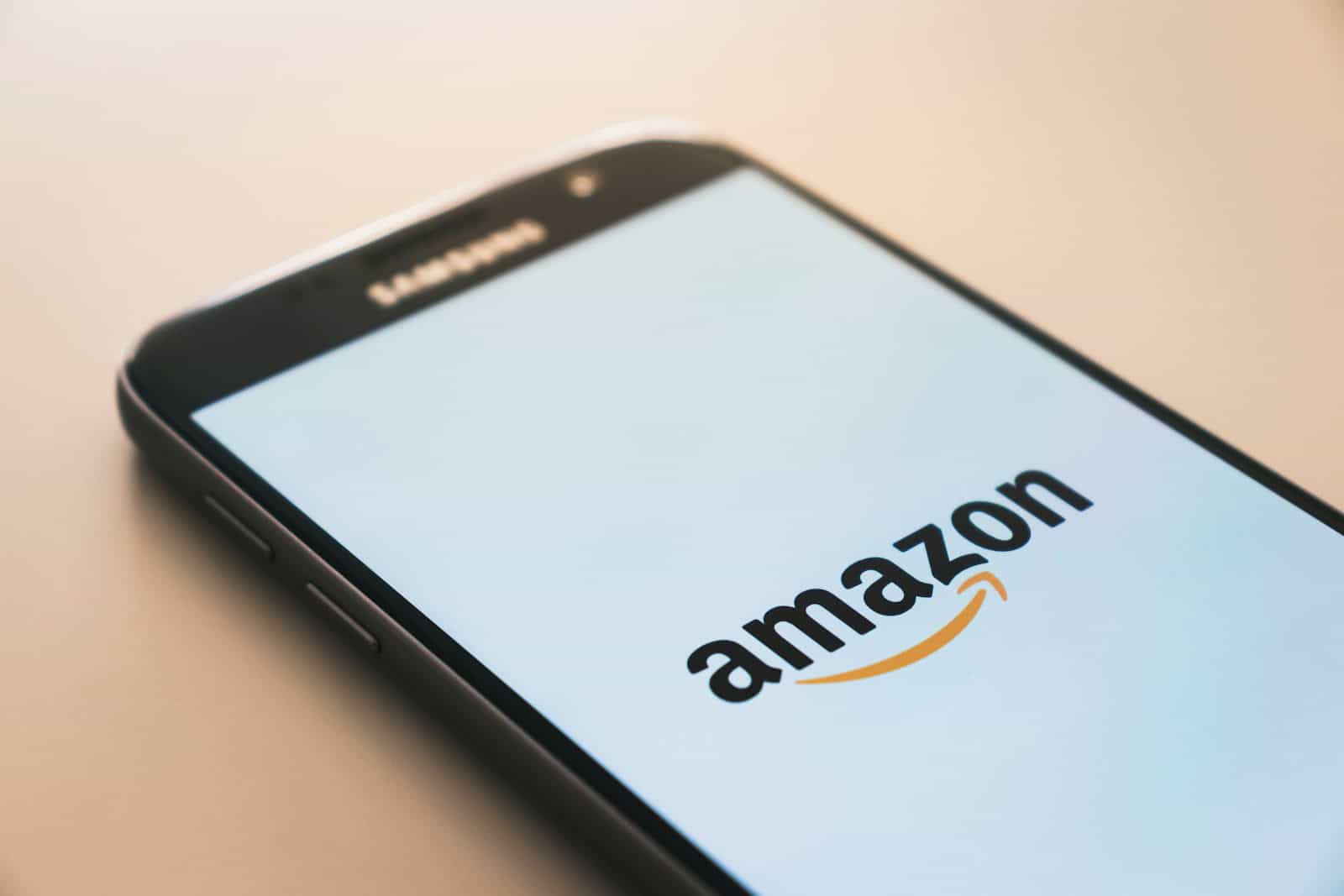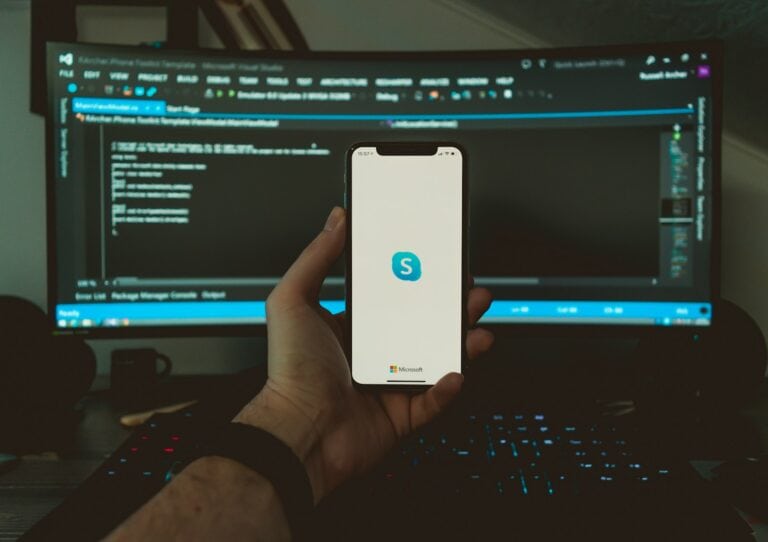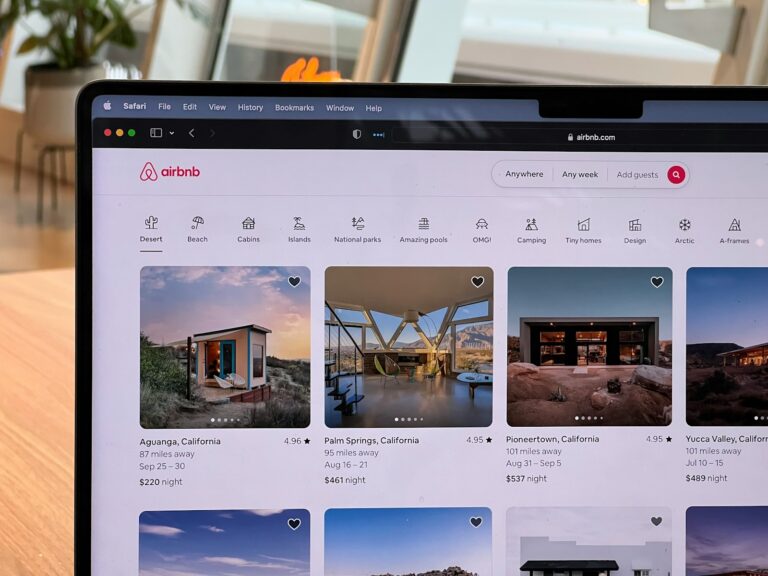

The Basics: Dates, Duration & Format
Prime Day 2025 officially kicks off at 12:01 a.m. PT on Tuesday, July 8 and runs straight through 11:59 p.m. PT on Friday, July 11—a full 96-hour marathon that doubles the length of last year’s event. Each calendar day brings a fresh slate of “Today’s Big Deals,” limited-quantity drops built around daily themes (think “Smart-Home Starter Kits” or “Outdoor Adventure Essentials”). Most headline offers go live right at midnight Pacific, with surprise Lightning Deals refreshing every five minutes once the clock starts.
Shop prime day on Amazon here: https://amzn.to/40oGFxq
What’s New This Year?
- Longer window, deeper stock: Amazon doubled the runtime after 2024’s two-day format repeatedly sold out of top-tier products in minutes. The extra days give Amazon’s logistics network more time to replenish inventory, so there should be fewer “out-of-stock” letdowns on hot items.
- Invite-Only Deals 2.0: Introduced last holiday season, Invite-Only offers now cover higher-profile brands—including Sony, YETI, and Ninja—allowing Prime members to request an invitation ahead of July 8. If you’re selected, the deal reserves a purchase slot for you during the event.
- 10 % Cash Back for Young Adults: Prime’s new 18-to-24 plan stacks a temporary 10 % statement credit on categories like home, fashion, and personal tech. That’s on top of the already-discounted student-rate membership fee.
- Alexa+ Deal Alerts: Amazon’s next-generation assistant will proactively surface personalized deals on devices you’ve browsed, then auto-notify your phone or Echo speaker as soon as the price drops. Opt in via the Alexa app.
Early Deals You Can Shop Right Now
Even before the clock strikes midnight on July 8, Amazon has unleashed hundreds of teaser discounts, some of which match last year’s all-time lows:
| Category | Standout Early Picks | Typical Savings |
|---|---|---|
| Home décor | Joanna Gaines × Loloi rugs | Up to 60 % off |
| Smart security | Blink Outdoor 4 + Video Doorbell bundle | 55 % off |
| Audio | Apple AirPods (3rd Gen) | 35 % off |
| Floor care | Dyson V15 Detect Absolute | $200 off |
| Kitchen | Ninja Woodfire Outdoor Grill | 40 % off |
| Travel | Samsonite Winfield 3 luggage | Up to 70 % off |
Pro tip: Items tagged “Prime Day Deal – Early Access” almost always drop at least one additional price tier when Prime Day officially opens, so you can set a price-watch and buy later if you’re willing to gamble.
Prime Membership Paths & Hidden Perks
| Plan | Cost After Trial | Best For | Extra 2025 Benefits |
|---|---|---|---|
| Standard Prime | $14.99 mo / $139 yr | Most shoppers | $10 credit for choosing no-rush shipping on 2+ orders during Prime Day |
| Young Adult (18-24) | $7.49 mo | College & early-career | 10 % cash back in top categories |
| Prime Access | $6.99 mo | Qualifying EBT/Medicaid holders | Free Grubhub+ through 2025 |
| 30-Day Free Trial | $0 | New users | Full access to all Prime Day deals |
Beyond free shipping, Prime members can stack:
- $2–$5 Amazon credits for selecting no-rush delivery.
- 25 ¢-per-gallon discounts at participating gas stations via Amazon Pay.
- Three free months of Audible Premium Plus if you haven’t subscribed before.
Global Rollout
Prime Day 2025 follows a staggered timetable:
- July 8–11: United States, Canada, United Kingdom, Australia, Japan, most EU countries, and the Middle East.
- July 12–14: India (timed around major bank-card cash-back promos and local seller events).
- July 15–16: Brazil and select Latin-American markets pilot a shorter, region-specific version focused on electronics and home appliances.
How to Maximize Your Savings
- Load your Wish List now. Anything on a Wish List gets a push notification if it becomes a Prime Day deal.
- Use multiple devices. Lightning Deals can disappear in seconds—checking out on desktop while monitoring your phone boosts your odds.
- Leverage Amazon Household. Two adults can share the same Prime membership; split purchases to avoid cart limits on high-demand items.
- Stack gift-card reload bonuses. Historically, Amazon has offered up to $12 free credit on a $50 reload—watch for the banner to appear on your account dashboard.
- Compare rival events. Walmart Deals (July 8–13) and Target Circle Week (July 6–12) often beat Amazon on small-appliance and apparel pricing. Keep an eye on Best Buy’s “Black Friday in July” flash sales, too.
Categories Poised to Dominate 2025
- Smart-home ecosystem upgrades (Matter-ready hubs, Wi-Fi 7 routers, HomeKit Secure cameras).
- AI-powered personal electronics such as laptops with on-device AI accelerators and the latest Snapdragon X Elite-based Windows machines.
- Outdoor & backyard living—expect steep cuts on patio furniture, inflatable hot tubs, and pellet grills as retailers clear summer inventory.
- Sustainable essentials highlighted by Amazon’s Climate Pledge Friendly badge, including home-compostable trash bags and low-VOC mattresses.
Whether you’re saving for a flagship OLED TV or simply re-upping your supply of household basics, Prime Day 2025 promises the deepest discounts Amazon has offered to date—and with four full days to shop, you’ll have more breathing room to strategize, compare, and score the gear you actually want.
When Is the Best Time to Buy a TV?
Looking for a new TV can be overwhelming with so many options and prices. Timing your purchase right can save you hundreds of dollars while still getting the latest features you want. The best times to buy a TV are during late January before the Super Bowl, April to early July for spring clearance sales, and November during Black Friday sales when prices typically reach their lowest points of the year.
TV technology changes quickly, and retailers often discount older models when new ones arrive. Many people don’t realize that prices fluctuate predictably throughout the year, with November offering the lowest prices during Black Friday sales. While Super Bowl season used to be the prime time for discounts, many retailers now start TV sales in late January as they clear inventory for newer models.
Spring is another excellent time for TV shopping as manufacturers release new models and discount previous year’s inventory from April to early July. Remember that timing isn’t everything—sometimes the right TV at the right price can appear outside these windows, especially if you’re flexible about which model you want.
Key Takeaways
- Black Friday in November typically offers the deepest TV discounts of the year, while January-February and spring clearance sales provide good alternatives.
- Retailers discount older TV models when new ones arrive, making April-July an excellent window for finding quality TVs at lower prices.
- Researching TV features and technology before shopping helps consumers make informed decisions regardless of when they purchase.
Understanding TV Technology
When buying a TV, knowing the technology behind it helps you make a smarter purchase decision. Different features affect picture quality, user experience, and ultimately the best time to buy.
The Evolution from LED to OLED and QLED
Traditional LED TVs use an LCD panel with LED backlighting, making them affordable but limited in contrast capabilities. These remain popular budget options but are gradually being replaced by superior technologies.
OLED TVs represent a significant leap forward. Unlike LED models, each pixel emits its own light and can turn off completely, creating perfect blacks and infinite contrast ratios. This technology delivers stunning picture quality but comes at a premium price point.
QLED TVs (developed by Samsung and others) use quantum dot technology to enhance traditional LED displays. They offer brighter highlights than OLED and better color accuracy than standard LED TVs, positioning them as a strong mid-range option.
Manufacturers typically release new OLED and QLED models between February and May each year, making late winter and early spring a good time to find discounts on previous generation models.
Smart TVs and Streaming Services Integration
Smart TVs have become the industry standard, with built-in operating systems like Roku, Google TV, and webOS offering direct access to streaming platforms. These interfaces vary in speed, ease of use, and app availability.
Most smart TVs support major streaming services like Netflix, Hulu, and Disney+. Higher-end models often include voice control through Google Assistant, Alexa, or proprietary systems.
The connected nature of smart TVs means they receive software updates that can add features or improve performance over time. This connectivity has extended the useful life of TVs, as new apps and capabilities arrive without hardware changes.
When shopping, pay attention to the smart platform’s responsiveness and app ecosystem rather than just picture specifications. A TV with excellent picture quality but poor interface can diminish your viewing experience.
Resolution: From 4K to 8K
4K TVs (3840×2160 pixels) have become the standard resolution for most sizes above 43 inches. They provide excellent detail and are well-supported with native 4K content from streaming services and gaming consoles.
8K TVs (7680×4320 pixels) offer four times the resolution of 4K models but come with significant price premiums. Native 8K content remains extremely limited, though these TVs use upscaling technology to improve lower-resolution sources.
For most viewers with average-sized rooms, a quality 4K TV provides the optimal balance of performance and value. The visual difference between 4K and 8K becomes noticeable only on very large screens viewed from close distances.
Screen size should inform your resolution choice. For TVs under 55 inches, the benefits of 8K are virtually imperceptible, making 4K the more sensible option.
HDR, Dolby Vision, and Refresh Rates
HDR (High Dynamic Range) technology dramatically improves contrast and color, creating more lifelike images. Look for TVs supporting HDR10, HDR10+, or Dolby Vision formats for the best experience.
Dolby Vision offers dynamic scene-by-scene optimization compared to standard HDR, producing superior results when watching compatible content. Premium TVs often support multiple HDR formats for maximum compatibility.
Refresh rate measures how many times per second a TV updates its image. A 120Hz refresh rate delivers smoother motion in sports and action scenes compared to standard 60Hz panels. It’s also essential for next-generation gaming consoles.
Variable refresh rate (VRR) technology prevents screen tearing during gaming by synchronizing the TV’s refresh rate with the game’s frame rate. This feature is particularly valuable for PlayStation 5 and Xbox Series X owners seeking optimal gaming performance.
Best Times of the Year to Buy a TV
Looking for a new TV means timing your purchase right to get the best deals. Certain times of the year consistently offer better prices on televisions across major retailers.
Black Friday and Cyber Monday Sales
Black Friday remains the champion of TV sales throughout the year. Retailers typically offer their deepest discounts during this period, with savings often reaching 30-50% off regular prices.
Many stores now extend their Black Friday TV deals throughout the entire Thanksgiving weekend and into Cyber Monday. This shopping event has transformed from a single day to a week-long opportunity for savings.
The selection during this time is usually excellent, with retailers stocking up on inventory to meet demand. Premium brands like Samsung, LG, and Sony participate with significant markdowns on current models.
For those willing to brave the crowds or set early online alarms, doorbusters can offer even deeper discounts on select models. However, shoppers should research beforehand as the very lowest-priced deals may be on entry-level models.
Super Bowl Season Promotions
Late January through early February marks another prime time for television purchases. Retailers know many consumers want to upgrade before the big game, creating a competitive pricing environment.
Super Bowl season typically sees discounts of 15-30% on mid-range and high-end TVs. The focus tends to be on larger screen sizes (55″ and above) that deliver an immersive sports viewing experience.
This time frame is particularly good for premium models with features that enhance sports viewing, such as:
- High refresh rates (120Hz+)
- QLED and OLED displays
- Enhanced motion handling
Many electronics retailers offer free delivery or setup during this period as additional incentives. For those who missed Black Friday deals, Super Bowl promotions represent a second chance at significant savings.
End-of-Year Discounts and Clearance Sales
December brings a mix of holiday sales and year-end inventory clearance events. Retailers often discount existing stock to meet annual sales targets and make room for incoming models.
These end-of-year sales typically offer 20-25% discounts, with deeper cuts on display models or discontinued lines. Boxing Day (December 26) can be particularly rewarding for patient shoppers willing to wait until after Christmas.
The selection may be more limited than during Black Friday, but the crowds are usually smaller. This period works well for buyers who:
- Need a replacement TV quickly
- Prefer shopping with less pressure
- Are open to slightly older models
Many retailers also offer price-matching guarantees during this time, allowing savvy shoppers to secure the lowest available price without extensive store-hopping.
New Model Introductions: When to Expect Price Drops
January’s Consumer Electronics Show (CES) is where manufacturers unveil their latest TV models. This announcement cycle creates a predictable pattern of price reductions on previous-generation sets.
Spring (March-May) often sees price drops on last year’s models as retailers clear inventory for new arrivals. Discounts typically range from 20-40% off original prices.
Summer sales events in June and July offer another window of opportunity. Many retailers launch “Christmas in July” promotions with competitive pricing on mid-cycle inventory.
The sweet spot comes when:
- New models have been on the market for 2-3 months
- Previous generation TVs are still available
- Retailers need to accelerate clearance of older inventory
For buyers who don’t need cutting-edge features, these transition periods offer excellent value on models that were premium just months earlier.
Where to Find the Best TV Deals
Finding the best prices on TVs requires knowing where to look and when to buy. Retailers and manufacturers offer various discounts throughout the year, but some places consistently provide better values than others.
Navigating Online Retailers for Top Discounts
Amazon ranks among the top destinations for TV shoppers, featuring competitive pricing year-round and lightning deals during Prime Day events. Their user-friendly interface allows customers to filter by brand, size, and features while comparing models side-by-side.
For exclusive online offers, consider these strategies:
- Sign up for price alerts using tools like CamelCamelCamel for Amazon
- Join retailer email lists for early access to flash sales
- Look for bundles that include soundbars or streaming devices at reduced prices
Many online retailers offer extended holiday pricing periods, not just single-day events. Black Friday deals now frequently run throughout November, giving shoppers more flexibility.
Comparing Prices Across Big Box Stores
Best Buy consistently offers competitive TV pricing, especially for premium brands like Samsung, Sony and LG. Their price match guarantee provides shoppers added confidence when making purchases.
Walmart excels with budget-friendly options from brands like TCL, Hisense, and Vizio. Their clearance sections often feature last year’s models at substantial discounts.
When shopping in-store:
- Check floor models for additional savings (up to 15-20% off)
- Ask about open-box specials – these are typically returns with full warranties
- Look for bundle deals with mounting hardware or warranties
Many big box retailers offer additional discounts for signing up for store credit cards or rewards programs. These savings can be substantial, especially on higher-end models.
Taking Advantage of Manufacturer Promotions and Rebates
TV manufacturers frequently run their own promotions separate from retailer discounts. Samsung, Sony, and LG often provide rebates during model transitions in spring when newer versions hit the market.
Brand-specific strategies include:
- Samsung: Offers trade-in programs for older TVs and bundle deals with soundbars
- Sony: Provides extended warranties and PlayStation bundle offers during gaming seasons
- LG: Features rebate programs after major sporting events like the Super Bowl
Manufacturer websites sometimes offer exclusive models not available at retailers. These direct-purchase options may include free shipping, extended warranties, or premium installation services not typically included with retail purchases.
Follow brands on social media to catch limited-time promotions and flash sales that might not receive widespread advertising through conventional channels.
TV Brand Overviews and Technologies
The television market features several major manufacturers, each with distinct approaches to picture quality, smart features, and price points. Understanding the strengths of each brand can help buyers make informed decisions when shopping during sales periods.
Samsung: Innovations and TV Offerings
Samsung leads the global TV market with cutting-edge display technologies. Their QLED (Quantum Dot LED) TVs deliver vibrant colors and impressive brightness levels that work well in brightly lit rooms.
For premium buyers, Samsung’s Neo QLED series combines mini-LED backlighting with quantum dots, offering enhanced contrast and more precise dimming zones. This technology bridges the gap between traditional LED and OLED displays.
The brand’s Tizen operating system provides a user-friendly smart TV experience with access to major streaming services. Recent models feature Gaming Hub, which supports cloud gaming without additional hardware.
Samsung’s lifestyle TVs like The Frame and The Serif cater to design-conscious consumers who want their television to complement home décor. The Frame displays artwork when not in use, blending seamlessly into living spaces.
Price ranges vary widely, from budget-friendly Crystal UHD models to high-end 8K displays costing several thousand dollars.
Sony’s Reputation for Quality and Performance
Sony TVs are known for exceptional picture processing capabilities. Their Bravia XR processor analyzes content to optimize every scene, resulting in more realistic images.
The brand excels in motion handling, making Sony a preferred choice for sports fans and movie enthusiasts. Their OLED models, using panels manufactured by LG Display, are enhanced with Sony’s proprietary technologies.
Sony implements Google TV (formerly Android TV) for smart features, offering extensive app selection and seamless integration with other Google services. Voice control through Google Assistant comes standard on newer models.
Audio quality sets Sony apart from competitors. Many models feature Acoustic Surface technology, where the screen itself produces sound, creating a more immersive experience.
While typically priced higher than comparable models from other brands, Sony’s quality justification makes them worth considering when they go on sale during major shopping events.
LG’s Market Presence with OLED Technologies
LG dominates the OLED TV market as both a manufacturer of panels and consumer televisions. OLED technology allows each pixel to emit its own light, resulting in perfect black levels and infinite contrast.
The brand’s OLED lineup includes various series at different price points, from the more affordable A and B series to premium G series (Gallery) and flagship Z series with 8K resolution.
LG’s webOS smart platform is intuitive and responsive, featuring a customizable home screen. The Magic Remote, with its point-and-click functionality, makes navigation easier than traditional remote controls.
For gamers, LG OLED TVs offer advantages with multiple HDMI 2.1 ports, low input lag, and support for variable refresh rates. Many models are certified for both NVIDIA G-Sync and AMD FreeSync.
Beyond OLED, LG produces QNED TVs combining quantum dot and NanoCell technologies with mini-LED backlighting at more accessible price points.
Emerging Brands like TCL and Hisense
TCL has rapidly grown from a budget option to a serious competitor across all price segments. Their 6-Series TVs regularly outperform more expensive alternatives from established brands.
TCL uses mini-LED technology in mid-range and premium models, providing excellent contrast and brightness. Most TCL smart TVs in North America run on Roku TV or Google TV platforms, offering simple interfaces and comprehensive app support.
Hisense similarly delivers impressive value with technologies like ULED (their enhanced LED system). Their recent U8 and U9 series models compete with flagship offerings from premium brands at substantially lower prices.
Both TCL and Hisense have strengthened their warranty programs and customer service to address previous concerns about longevity and support. This makes them increasingly attractive alternatives to traditional brands.
For budget-conscious shoppers, these emerging brands often offer the best specifications-to-price ratio, especially during major sales events like Black Friday.
Vizio: Balancing Cost and Features
Vizio has built its reputation on providing premium features at mid-range prices. Their P-Series and OLED models deliver excellent picture quality while undercutting competitors by hundreds of dollars.
The company’s SmartCast platform includes built-in Chromecast and AirPlay 2 compatibility, allowing easy streaming from mobile devices. However, the interface is sometimes less responsive than competing systems.
Vizio excels in audio solutions, with many models designed to work seamlessly with their sound bars. Their Elevate and M-Series sound bars provide immersive audio without complex setup procedures.
For gaming, recent Vizio models include HDMI 2.1 ports with 4K/120Hz capability and variable refresh rate support. The brand frequently updates older TVs with new features through firmware.
Vizio TVs are primarily sold in North America through retailers like Costco, Best Buy, and Walmart, where they often receive additional discounts during holiday shopping events.
Enhancing TV Experience with Ancillary Products
After purchasing a TV, complementary products can dramatically improve your viewing experience through better connectivity, content options, and audio quality.
Choosing the Right HDMI Cables
HDMI cables are essential for connecting your TV to external devices, but not all cables are created equal. For modern 4K or 8K TVs, HDMI 2.1 cables support higher bandwidth necessary for top-quality picture and sound.
When shopping for HDMI cables, focus on:
- Cable certification: Look for “Premium High Speed” or “Ultra High Speed” labels
- Length: Shorter cables (3-6 feet) typically provide better signal quality
- Price point: Mid-range options ($10-30) often deliver the best value
Don’t waste money on gold-plated or overpriced options. Most viewers won’t notice a difference beyond what standard certified cables offer.
Be wary of counterfeit cables that claim high specifications but deliver poor performance. Reputable brands like Belkin, Monoprice, and AmazonBasics provide reliable options at reasonable prices.
Streaming Services: Netflix, Amazon Prime, and More
Today’s entertainment landscape is dominated by streaming platforms that offer vast content libraries directly to your TV.
Popular streaming services include:
| Service | Monthly Cost | Key Features |
|---|---|---|
| Netflix | $8.99-19.99 | Original content, 4K streaming, offline downloads |
| Amazon Prime | $14.99 | Includes shipping benefits, 4K content |
| Disney+ | $7.99-13.99 | Family content, Marvel, Star Wars franchises |
| Hulu | $7.99-17.99 | Next-day TV episodes, original programming |
| Peacock | Free-11.99 | NBC content, Olympics coverage, tiered pricing |
Consider bundling services for savings. Many providers offer discounted packages that combine multiple platforms.
Most new smart TVs include built-in apps for these services. However, external streaming devices like Roku or Apple TV might provide better interfaces and more frequent updates.
Sound Systems: Sound Bars and Surround Sound
While TV picture quality has improved dramatically, built-in speakers often remain underwhelming. External sound systems can transform your audio experience.
Sound bars offer the simplest upgrade path. These single-unit systems are:
- Easy to install (typically one cable connection)
- Space-efficient for smaller rooms
- Reasonably priced ($100-500 for quality options)
For more immersive audio, surround sound systems create three-dimensional soundscapes. Entry-level 5.1 systems (five speakers plus subwoofer) start around $300, while premium Dolby Atmos setups can exceed $1,000.
Consider room acoustics when selecting audio equipment. Hard surfaces reflect sound, potentially causing echo issues. Carpeting and soft furnishings help absorb excess sound for clearer audio reproduction.
Wireless options have improved significantly, reducing cable clutter while maintaining excellent sound quality.
Privacy and Security for Smart TV Users
Modern smart TVs collect significant amounts of data about viewing habits and usage patterns. Understanding these practices helps consumers make informed decisions about their privacy while enjoying the benefits of connected television.
Understanding Your TV’s Cookie Policy
Smart TVs use cookies and similar technologies to track viewing habits and preferences. These small data files store information about what shows you watch, which apps you use, and how you interact with your TV.
Most manufacturers include cookie policies in their terms of service, but these can be hard to find. Users should review these policies during setup or in the TV’s settings menu.
Different types of cookies serve various purposes:
- First-party cookies: Placed by the TV manufacturer
- Third-party cookies: Placed by advertisers and content providers
- Session cookies: Temporary tracking during use
- Persistent cookies: Remain on the device for extended periods
Many TVs offer options to limit cookie tracking. These settings are typically found under “Privacy” or “Smart Features” in the main settings menu.
Personal Data and Privacy Settings Management
Smart TVs collect personal data including viewing history, search terms, and sometimes voice commands. This information may be linked to your IP address, creating a detailed profile of your household.
To manage privacy settings effectively:
- Review initial setup options carefully – default settings usually favor data collection
- Disable ACR (Automatic Content Recognition) to prevent scanning of what appears on screen
- Turn off voice recognition features when not needed
- Regularly clear cached data through the TV’s storage settings
Many manufacturers hide privacy controls in submenus. Look for options called “Usage Data,” “Viewing Information,” or “Interest-Based Advertising” to restrict data collection.
Samsung, LG, and other major brands provide privacy dashboards where users can see what data is collected and request deletion when necessary.
Security Measures to Prevent Spam and Authenticate Users
Smart TVs can be vulnerable to security breaches if not properly protected. Corporate cybersecurity programs often overlook these devices despite their potential risks.
Essential security measures include:
Network protection:
- Use strong WiFi passwords
- Create separate guest networks for smart devices
- Enable router firewalls to monitor TV traffic
Device authentication:
- Set up PIN codes for purchases
- Use two-factor authentication for streaming accounts
- Create unique passwords for each service
Regular firmware updates are crucial for security. Most TVs can be set to update automatically, patching vulnerabilities before they can be exploited.
Parents should implement content restrictions and purchase controls to prevent unauthorized access by children. These features typically require PIN verification before certain content can be viewed or purchased.
Factors to Consider When Buying a TV
Choosing the right television involves more than just finding a good deal. Several technical features impact both viewing experience and long-term satisfaction with your purchase.
Screen Size and Viewing Distance
TV sizes continue to increase as prices drop, but bigger isn’t always better. The ideal screen size depends on your viewing distance and room dimensions.
For comfortable viewing, experts recommend sitting at a distance approximately 1.5 to 2.5 times the diagonal screen measurement. A 65-inch TV, for example, works best when viewed from about 8-10 feet away.
Wall space and room layout also matter. Measure your space before shopping to ensure your new TV fits properly. Remember that TVs appear smaller in spacious showrooms than they will in your home.
Consider how you’ll mount the TV too. Wall-mounting saves space but requires proper support for larger screens. Table-standing TVs need appropriate furniture that can handle the weight and size.
Local Dimming and Contrast Ratios
Local dimming significantly impacts picture quality, especially for viewing in darker rooms. This technology allows specific areas of the screen to darken independently, creating deeper blacks and better contrast.
Full-array local dimming offers superior performance compared to edge-lit alternatives. TVs with more dimming zones generally provide better picture quality but come at higher prices.
Contrast ratio measures the difference between the brightest whites and darkest blacks. Higher contrast ratios deliver more detailed images with greater depth.
OLED TVs naturally excel in this area since each pixel generates its own light and can turn completely off for perfect blacks. For LED/LCD TVs, look for models that specifically mention high contrast performance.
HDR (High Dynamic Range) content takes advantage of good contrast ratios, delivering more vibrant and realistic images when watching compatible content.
TV Longevity and Warranty Offers
Modern TVs typically last 7-10 years with proper care. However, durability varies by manufacturer and model.
Research brand reliability records before purchasing. Some manufacturers have better track records for longevity and fewer reported issues over time.
Standard warranties typically cover manufacturing defects for one year. Consider extended warranty options for higher-end purchases, especially if you’re investing in cutting-edge technology that may have early reliability issues.
Check warranty terms carefully. Some cover parts but not labor, while others offer in-home service for larger screens that are difficult to transport.
Energy efficiency affects long-term cost and lifespan. ENERGY STAR certified models consume less power and often generate less heat, potentially extending component life.
Budget and Cost of Ownership
When creating a TV buying guide for yourself, look beyond the initial purchase price. The total cost of ownership includes electricity consumption, potential accessory upgrades, and replacement costs for non-repairable components.
Premium features like OLED screens, advanced gaming capabilities, and superior sound systems significantly impact price. Decide which features matter most based on your viewing habits.
Many retailers offer financing options for high-end TVs. Calculate the total cost including interest before committing to payment plans.
Sales cycles make a difference in pricing. The best time to buy a TV typically falls around Super Bowl season, Black Friday, and when manufacturers release new models.
Consider future-proofing your purchase with newer technologies like HDMI 2.1 if you plan to keep the TV for many years, even if it means stretching your budget slightly.
The Impact of Advertising and Personalized Content
Television advertising has evolved dramatically, with personalization and data-driven strategies now influencing not just how TVs are marketed but also when consumers choose to purchase them. Smart buyers who understand these trends can time their purchases more effectively.
The Role of Personalised Advertising on TV Buyers
Personalized advertising has transformed how consumers shop for televisions. Major retailers now track viewing habits and shopping behaviors to target potential TV buyers with specific models and promotions. This personalized approach creates unique experiences that influence purchasing decisions throughout the year.
During major shopping events like Black Friday or Super Bowl sales, personalized ads become even more targeted. Consumers who have researched TV models online may receive customized pricing offers through email, social media, or streaming platforms.
Manufacturers have shifted from broad seasonal campaigns to individualized promotions based on user preferences. A shopper who previously viewed 65-inch OLED models might receive specific discount notifications when those models go on sale.
The effectiveness of these personalized campaigns has made traditional TV buying seasons less predictable. Savvy consumers can now receive personalized deals year-round rather than waiting for predetermined sales events.
Content Measurement and Audience Research
Retailers and manufacturers rely heavily on content measurement and audience research to determine optimal timing for TV promotions. These data-driven insights help companies understand when consumers are most receptive to TV purchases.
Analytics firms track search volume for TV models, which typically spikes 2-3 weeks before major sales events. This measurement of consumer behavior helps retailers time their promotions for maximum impact.
Audience segmentation has become increasingly sophisticated. First-time buyers, upgraders, and premium technology enthusiasts each receive different messaging at different times of the year.
Research shows that major sporting events trigger interest in TV upgrades:
- Super Bowl: 32% increase in premium TV searches
- March Madness: 18% increase in large-screen models
- Olympics: 24% increase in advanced technology models
Smart buyers monitor these promotional patterns and time their purchases to align with these predictable marketing pushes.
Developing Services Based on Geolocation Data and Search Data
Retailers now leverage geolocation and search data to create regionally-specific TV promotions and services. These location-aware strategies have created new buying opportunities that vary by region and market.
Television manufacturers partner with retailers to create location-specific campaigns based on local events, weather patterns, or regional preferences. Consumers in hurricane-prone areas might see TV promotions ahead of storm season, while northern regions see deals before winter indoor entertainment seasons.
Search data analysis reveals regional timing variations in TV purchasing:
- Northeast: Highest purchase rates in November and January
- Southwest: Strong sales in September and May
- Midwest: Peak buying in December and July
Many retailers now offer location-based price matching and delivery services. Consumers who understand these regional patterns can take advantage of location-specific promotions rather than following national sales trends.
The integration of search and location data has created a more dynamic TV buying calendar that savvy shoppers can leverage throughout the year.
Frequently Asked Questions
TV shopping can be confusing with prices changing throughout the year. Many consumers wonder about timing their purchase to get the best value.
What are the best months to purchase a television to secure a good deal?
The best months to buy a TV are January, February, and November. Late January through early February offers excellent deals as retailers clear inventory before new models are released.
Many stores also discount TVs during Super Bowl season as football fans upgrade their viewing experience for the big game.
November stands out due to Black Friday and pre-holiday sales, which typically feature the deepest discounts of the year on televisions.
Are there specific times of the year when televisions are most discounted?
Three major discount periods exist for television purchases. The weeks surrounding the Super Bowl (late January to early February) feature significant price cuts, especially on larger screen sizes.
Black Friday and the entire November holiday shopping season offer the busiest month for TV sales with substantial discounts.
The post-Christmas period into early January also presents opportunities as retailers clear inventory to make room for newer models announced at the Consumer Electronics Show.
How do holiday sales affect TV prices, and when should consumers take advantage of them?
Holiday sales dramatically reduce TV prices, with Black Friday leading the pack for maximum discounts. During this period, retailers often slash prices by 20-40% on current models.
The two weeks after Christmas also offer excellent opportunities as stores clear holiday inventory and prepare for new models.
Super Bowl promotions provide another holiday-adjacent window for savings, particularly on premium and large-format televisions as retailers target sports enthusiasts.
Do consumer reports indicate optimal periods for buying a TV to maximize value?
Consumer reports consistently identify three optimal buying periods: Black Friday sales, Super Bowl season, and when new models are released.
When new TV models hit stores (typically March-April), previous generation models see significant price reductions despite often having similar performance to newer versions.
Value-conscious shoppers can maximize their dollar by purchasing slightly older OLED models during these transition periods, which offer premium features at midrange prices.
In terms of retailer promotions, when is it most advantageous to buy a TV from stores like Best Buy or Costco?
Big-box retailers like Best Buy and Costco offer their most aggressive TV promotions during Black Friday and the surrounding weeks. These often include extended warranties or bonus items.
January clearance events at these retailers can provide exceptional value as they make space for new models announced at CES.
Many retail experts note that warehouse clubs like Costco often extend manufacturer warranties at no extra cost, adding value beyond the purchase price regardless of season.
What are the benefits of buying a TV in brick-and-mortar stores versus online marketplaces?
Brick-and-mortar stores allow consumers to assess picture quality in person and often provide immediate delivery or pickup options. This hands-on experience helps confirm if premium features justify higher costs.
Physical retailers frequently offer installation services and may be more accommodating with price matching policies during competitive sales periods.
Online marketplaces typically provide wider selection and sometimes lower prices due to reduced overhead costs. However, shipping large TVs adds complexity and potential for damage that in-store purchases avoid.






